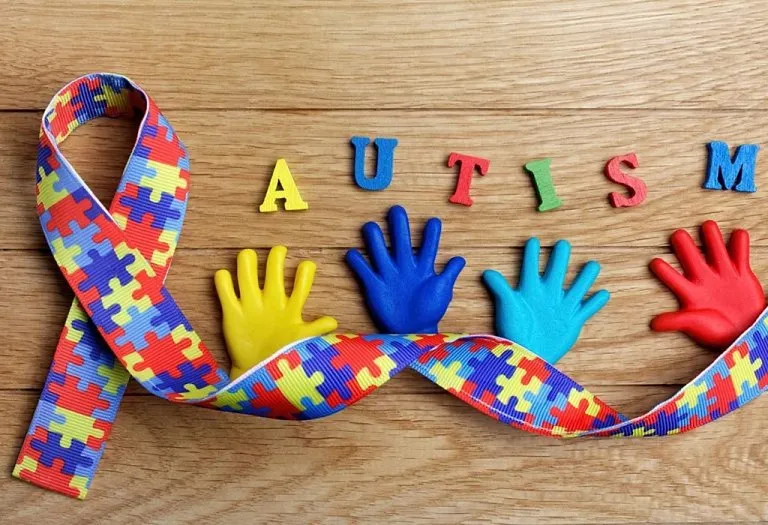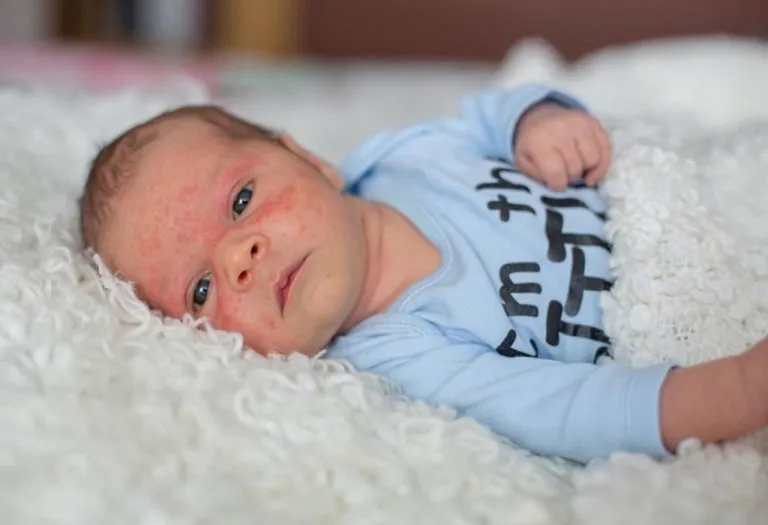Signs and Symptoms of Autism in Babies and Toddlers
As a parent, you are constantly on the lookout for anything that could harm the health of your baby. While certain signs and symptoms can be ignored, there are a few that will need your immediate attention. Recognizing these early signs can help ensure the best outcome for your child.
In the case of autism and autism spectrum disorders, it can be really hard for parents to notice the symptoms that occur in the early stages. This is why it’s important to be aware of any unusual behaviors. Early intervention is crucial in helping children with autism reach their full potential. This article highlights a few key symptoms, including signs of autism in infants, that can easily be noticed and alert you to the possibility of your baby being affected by the problem.
What Is Autism?
Autism, or Autism Spectrum Disorder (ASD), is a developmental disorder that affects a child’s ability to communicate, interact socially, and engage in repetitive behaviors or restricted interests. It is a spectrum, meaning that the symptoms and severity can vary widely from person to person. While the exact cause of autism is not fully understood, it is believed to involve a combination of genetic and environmental factors.
Autism typically becomes evident in early childhood, with signs appearing before the age of 3. Early diagnosis and intervention are crucial to helping children with autism improve their skills and lead fulfilling lives.
Signs of Autism in Infants and Toddlers
There are a few red flags that could mean that your baby could be on the spectrum. The symptoms of autism in toddlers that need to be checked are given below.
1. Slow Development
In autistic children, the rate of development is slow compared to their unaffected peers. While this is usually not given much thought by parents, it could actually imply that your baby has some serious problems. The growth and communication skills of the child get limited to a few simple gestures and words, and the child does not develop quickly.

2. Eye Contact
Another thing to note about autistic babies and toddlers is that they do not make eye contact for a long time with the people around them. This is seen even if the parents call the names of the children. Autistic babies also tend to have an abnormal gaze and a general loss of focus. They may also exhibit languidness or a lack of interest in their immediate surroundings.

3. Repetitive Behaviour
Some children affected by autism also show a lack of willingness to move away from their routine of doing things. While this by itself is not something that most parents are concerned about, it may mean that your child has an ASD, especially if he exhibits some of the other symptoms mentioned here. If you try to disrupt their routines, they may exhibit actions like aggression, by banging their head on walls and such. Rocking the body back and forth in a flappy fashion is also common.

4. Obsession
This is perhaps the most common and important sign of autism in toddlers and babies. Autistic children get obsessed by particulars in their surroundings, like toys or food items. They seem to become completely invested in that specific thing and disregard other similar things. Food habits may become increasingly narrow, and autistic babies generally end up rejecting other food items. This is because of their inability and unwillingness to adapt or be open to change in their surroundings.

5. Limited Social Interaction
This is also a common symptom and is easy for parents to identify quickly. The child may show a loss of interest in interacting with other people, be it other children or even their own parents. This is because a lot of autistic children are generally hard of hearing, and so, their interactions are limited. They smile a lot less, hate meeting new people, and generally love to stay alone in their own cocoon of comfort. This may also lead to certain aggressive tendencies, like attacking their peers and other children for no reason at all.

6. Delay in Babbling
This is an important autistic characteristic in infants. Babies generally start to become more vocal around the one year mark, after which you will be hearing a lot more from your toddler. Cooing and babbling is their way of trying to communicate with the people around them, including their parents. Autistic babies may, however, end up not exhibiting these symptoms until they are older, and this is also attributed to the delay in general development.

7. Not Attention Seeking
As mentioned earlier, autistic children usually love being independent and hate social interaction with others. This may manifest in younger ages as a general disregard to her parents, and she may not even ask to be picked up at young ages. If your child isn’t interacting or reaching out to you as much as she should, this may point towards the onset of autism in your baby.

8. Slow Motor Development
This is an early sign of autism in babies and also another one of the most easily observable symptoms of autism. You may observe that the baby does not crawl, roll over or push herself up at the ages that she is supposed to. Motor development in autistic children is greatly delayed compared to other children of their age. So if your baby is not rolling over or crawling at the age that she is supposed to, you should definitely see the doctor.

FAQs
1. Can a child with autism develop a special ability or savant skill?
In rare cases, children with autism may exhibit extraordinary abilities or talents in areas like music, mathematics, or art, known as “savant skills.” These skills can sometimes emerge unexpectedly, and while they are not present in every child with autism, they are a remarkable and uncommon aspect of the disorder. However, the presence of a savant ability does not necessarily correlate with the severity of autism symptoms.
2. Do children with autism have a higher likelihood of developing other conditions, like epilepsy or ADHD?
Yes, children with autism have an increased risk of developing co-occurring conditions such as epilepsy or Attention-Deficit/Hyperactivity Disorder (ADHD). Studies show that around 20-30% of children with autism may also have epilepsy, and a significant number may exhibit symptoms of ADHD. These co-occurring conditions can complicate the diagnosis and treatment process, but early intervention can help manage both autism and any additional disorders.
3. Can a child with autism have an “autistic regression,” where skills they previously developed are lost?
Autistic regression is an uncommon phenomenon where a child who has been developing typically may begin losing previously acquired skills, such as language or social behaviors, around the age of 18 months to 2 years. While not all children with autism experience regression, it can be a sign of the condition and may require immediate assessment by a healthcare professional to ensure proper support is in place.
4. How can a child with autism respond to changes in diet or nutritional treatments?
Some children with autism may show improvements in behavior or communication when certain dietary changes are made, such as eliminating gluten or casein (found in dairy). While these changes do not work for all children, there are instances where specific diets, supplements, or nutritional interventions can help reduce symptoms or enhance focus. However, it’s essential that parents work with healthcare providers to ensure the child receives adequate nutrition.
Given above are some of the symptoms of autism in 2-year-old children, or rather, in toddlers and babies, which are hard to miss. If you feel that your baby has autism, consult with her doctor as soon as possible to know what you can do.
References/Resources:
1. Autism; National Institute of Environmental Health Sciences; https://www.niehs.nih.gov/health/topics/conditions/autism
2. About Autism Spectrum Disorder; CDC; https://www.cdc.gov/autism/about/index.html
3. Autism Spectrum Disorder: Communication Problems in Children; National Institute on Deafness and Other Communication Disorders; https://www.nidcd.nih.gov/health/autism-spectrum-disorder-communication-problems-children
4. Hyman. S, Levy. S, Myers. S, Kuo. D, et al.; Identification, Evaluation, and Management of Children With Autism Spectrum Disorder (Pediatrics); American Academy of Pediatrics; https://publications.aap.org/pediatrics/article/145/1/e20193447/36917/Identification-Evaluation-and-Management-of; January 2020
5. Autism Prognosis; Autism Research Institute; https://autism.org/autism-prognosis/
6. Shenoy. M, Indla. V, Reddy. H; Comprehensive Management of Autism: Current Evidence (Indian Journal of Psychological Medicine); National Library of Medicine; https://pmc.ncbi.nlm.nih.gov/articles/PMC5733418/
7. Stins. J, Emck. C; Balance Performance in Autism: A Brief Overview; Frontiers in Psychology; https://www.frontiersin.org/journals/psychology/articles/10.3389/fpsyg.2018.00901/full; June 2018
Also Read:
Dealing With a Slow Learning Child
Common Myths about Autism
How to Teach Autistic Child to Talk
Engaging Activities and Games for Autistic Children
Types of Autism Therapies That Will Work Best for Your Child
Was This Article Helpful?
Parenting is a huge responsibility, for you as a caregiver, but also for us as a parenting content platform. We understand that and take our responsibility of creating credible content seriously. FirstCry Parenting articles are written and published only after extensive research using factually sound references to deliver quality content that is accurate, validated by experts, and completely reliable. To understand how we go about creating content that is credible, read our editorial policy here.























